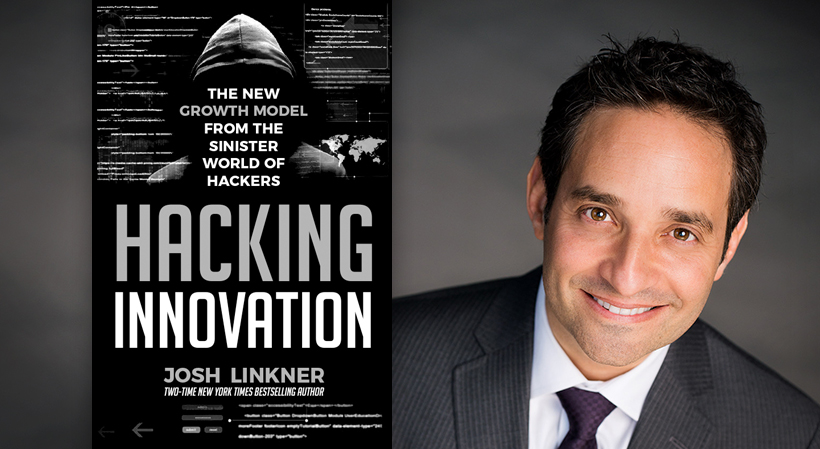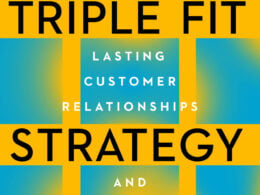The following excerpt was selected exclusively for StartupNation from “Hacking Innovation: The New Growth Model from the Sinister World of Hackers” © 2017 Josh Linkner. All Rights Reserved.
Agile bursts
“I don’t need time, what I need is a deadline,” legendary jazz composer and band leader, Duke Ellington, famously said. As one of the most innovative people in history, Ellington’s counterintuitive message is clear: time-constrained environments can actually foster creativity rather than restrict it.
Hackers foster the notion of time-constrained creative bursts by embracing the agile software development method. The term came to prominence in 2001, in conjunction with the publication of The Manifesto for Agile Software Development, which was drafted by 17 software developers who were trying to elevate their craft. A core element, and the one that was most revolutionary at the time, is the notion of working in short sprints rather than one large timeline. Prior to the agile movement, a group of developers would all work on a large project for months, building up to a single launch date. In the new model, short sprints are established that involve quick bursts of effort followed by numerous, smaller launches. Ranging from 48 hours to two weeks, developers work fast to ship code that must be tested, evaluated, and adapted many times along the way to a final launch.
Software engineers found that short, focused bursts under the umbrella of a ticking clock delivered more creative output and fostered better over-all quality, as they could course-correct early on if things went wrong. The bursts also helped recalibrate resource needs along the way, delivering a more efficient project in the end. Having to quickly ship working lines of code forced the developers to get scrappy and find creative workarounds to obstacles and challenges.
Related: How Your Startup Can Adopt the Growth Hacking Mindset
Some of the most creative cyberattacks in history have also come under the pressure of a deadline. Facing the ever-increasing threat of Iran’s developing nuclear program, the U.S. and its allies needed to deploy all available resources to prevent Iran’s ambitions. By 2010, Iran had publicly stated that it was committed to “wiping Israel off the map.” With the spread of Iranian-sponsored terrorist cells, allowing the country to develop nuclear weapons capabilities posed an existential threat not only to Israel, but also to democratic nations throughout the world.
As diplomatic efforts and sanctions sputtered, the United States and Israel secretly collaborated to fight back through hacking. A joint operation of hackers was established to slow down Iran’s nuclear ambitions by whatever means necessary. The covert team has never been openly confirmed by either country, but anonymous U.S. officials speaking to the Washington Post claimed the effort was created “to sabotage Iran’s nuclear program with what would seem like a long series of unfortunate accidents.”
Whoever they were working for, time was not on the side of this team of anti-proliferation hackers. Every day that passed was a moment closer to a fully functional Iranian nuclear program. Breaking the task into a series of sprints, the team used short bursts of creativity to attack their extremely important and time-sensitive mission.
Within 60 days, the team launched what later became known as the Stuxnet Worm. The original program was less than one megabyte, making it easy to transfer behind enemy lines. Once inside, the sneaky software targeted the Siemens SCADA control systems that commanded Iran’s uranium centrifuges. The clever hack secretly caused over 5,000 of the 8,800 centrifuges to spin incorrectly, stop randomly and resume erratically. All the while, the system reported that everything was running smoothly. This undetected malfunctioning drove the Iranian scientists mad, making them doubt their own work. Not knowing they were being deceived, the staff toiled unproductively for months. Before finally being discovered, the Stuxnet Worm wasted thousands of hours and millions of dollars in uranium resources. Most importantly, it delayed the advancement of Iran’s quest for nuclear power, allowing more time for diplomatic measures to take hold.
Sign Up: Receive the StartupNation newsletter!
Overlaying the element of time into the creative process adds a new dimension that can be harnessed and expanded upon. Time restrictions can be applied to the ideation process, further development or even the solutions that are created. In the Stuxnet example, time was constrained during the creative process. The forced deadline focused the team’s creative efforts and yielded an elegant solution, because it had to. Instead of seeing it as a constraint, time became a crucial element to their plan, which led to the small, self-growing code they developed and were able to quickly sneak into Iranian networks. They considered time to be a key part of their overall strategy. Rather than destruction of Iran’s network, which would be immediately noticed and repaired, the hackers sought maximum impact through a solution that caused damage slowly while going undetected.
Innovation hackers
Innovation hackers (from startups to corporate giants) leverage the method of agile bursts primarily through hackathons. With a fixed, short window of time, teams are focused on a desired outcome and then throw everything they have at the problem in a flat-out sprint. Hackathons have been used to invent new companies, cure disease, reimagine organizational structures and craft new solutions for customer engagement.
Some Hackathons are internal, focusing on specific or company-based problems, while others are independently-hosted gatherings to create new ideas, companies, and products from scratch.
Adam Savage, industrial and special effects designer of MythBusters fame, said it best: “Deadlines refine the mind. They remove variables like exotic materials and processes that take too long. The closer the deadline, the more likely you’ll start thinking waaay outside the box.” The intensity and focus, along with a ticking clock, can truly lead to breakthrough creativity.
“Hacking Innovation: The New Growth Model from the Sinister World of Hackers” is available now at fine booksellers, and can be purchased through StartupNation.com.
Reviews of “Hacking Innovation: The New Growth Model from the Sinister World of Hackers”
“Get ready to enter the minds of hackers, and walk out with fresh techniques for driving creativity and innovation.”
— Adam Grant “New York Times best-selling author of “Originals” and “Give and Take”
“Josh Linkner – who lives and breathes innovation – uses hacking as a metaphor for how creative people confront seemingly insurmountable problems and arrive at remarkable solutions. “Hacking Innovation” is about using a renegade way of thinking to break out of old models and lead yourself and your organization to a whole new level.”
— Eric Schurenberg President and Editor-in-Chief, INC. Magazine
“In a fast and ever-changing landscape, Josh provides urgent insight into the misunderstood skill of hacking and delivers a powerful look into a myriad of applications that will drive business success well into the future.” — John Fanning “Founding Chairman and CEO, napster”
“Linkner explores the creative world of hackers and provides a roadmap to help future generations of entrepreneurs and innovators push boundaries and explore the art of the possible.”
— Steve Case Co-founder and former CEO of AOL, New York Times best-selling author of “The Third Wave”






